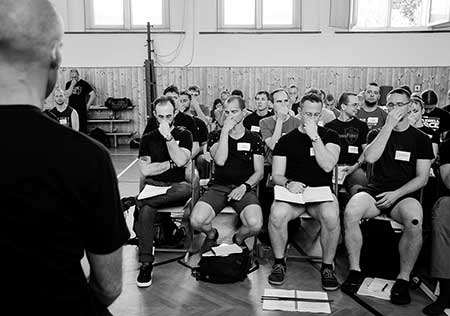Before you start
WARNING: Breath holds are counter-indicated to people with some health conditions, e.g., certain heart conditions. A clearance from a physician before undertaking breath holding is mandatory.
How to test your breath hold
If it ain’t broke, don’t fix it. In the countries of the former USSR they still use breath hold tests developed a century ago. Their original purpose was medical: to determine whether the patient’s heart could withstand general anesthesia. Later research concluded that these tests were very valuable to athletes and their coaches.
The particular test we will have you do is the Hench test. It is a timed breath hold following a normal exhalation preceded by normal—no hyperventilation—breathing.
Sit down in a chair. Do not lie down; for some interesting physiological reasons this would throw off your numbers. If you are accustomed to sitting in a lotus, a half-lotus, or seiza, still use a chair for this test to accurately compare yourself to others.
Simply relax for a couple of minutes.
Then, after a normal inhalation, passively exhale through your mouth (the usual amount of air you exhale when you are at rest; no more and no less), pinch off your nose, and start the clock.
Take note of the time when you start experiencing discomfort.
Keep holding.
Hold for as long as you can stand it—then hold some more. Use all your willpower.
When you cannot take it anymore and open your mouth, the clock stops.
Things not to do before the test
Hyperventilating“Warm-up” breath holds
Either would significantly increase your breath hold time and make the Hench test invalid.
Moreover, for most people, even healthy ones, hyperventilation is counter-indicated for reasons I will explain another time.
Let Pavel walk you through the test on video
an online course by Pavel
How to interpret your results
That is a topic for our next e-mail. Until then, write down your two times: how long you have held your breath before experiencing the first difficulty and how long you held it altogether.
